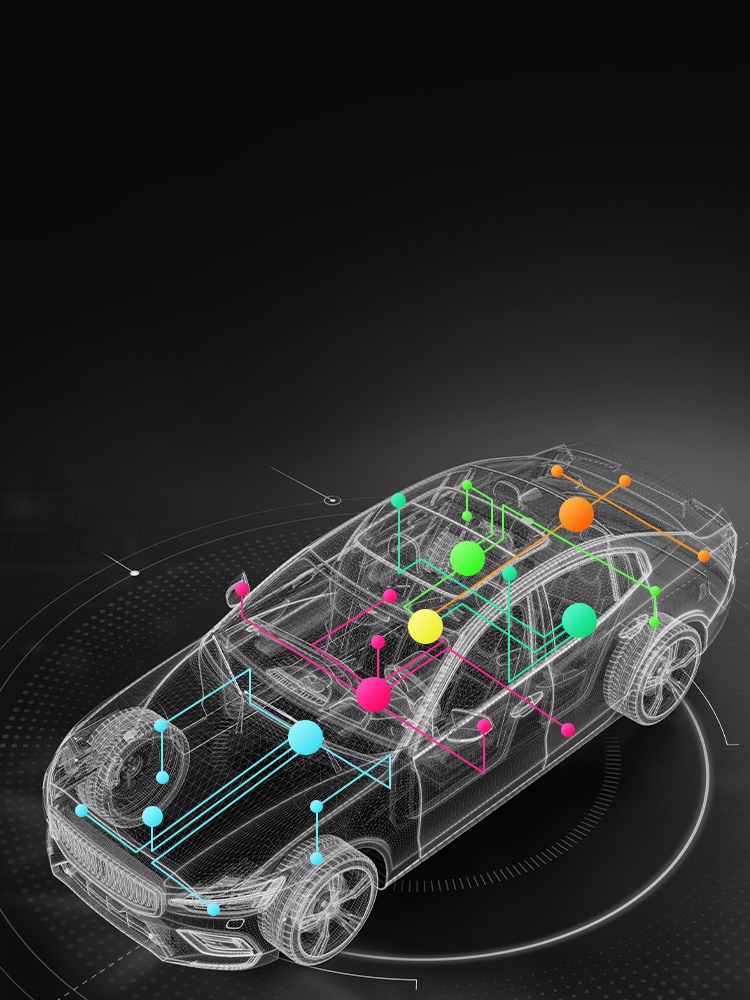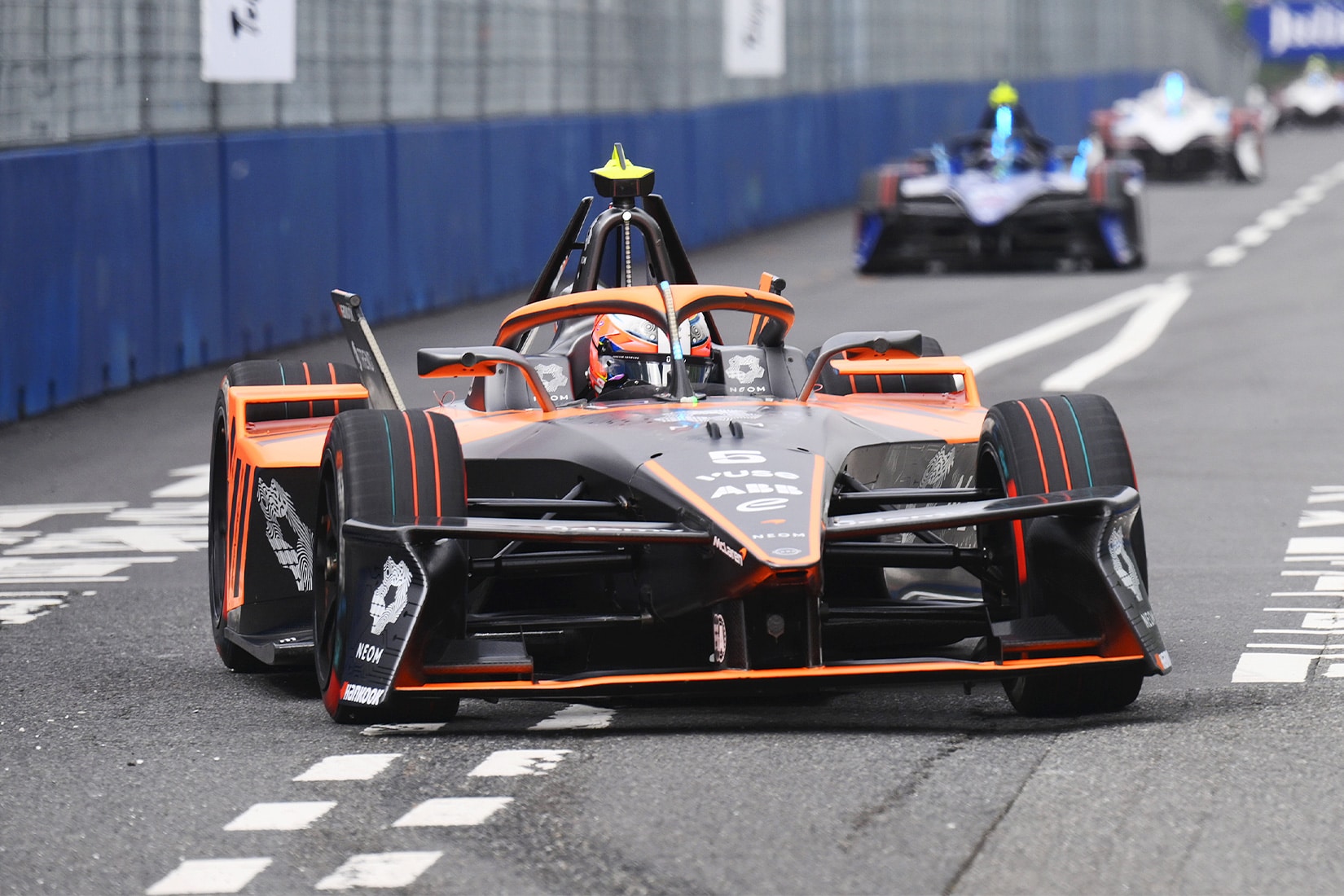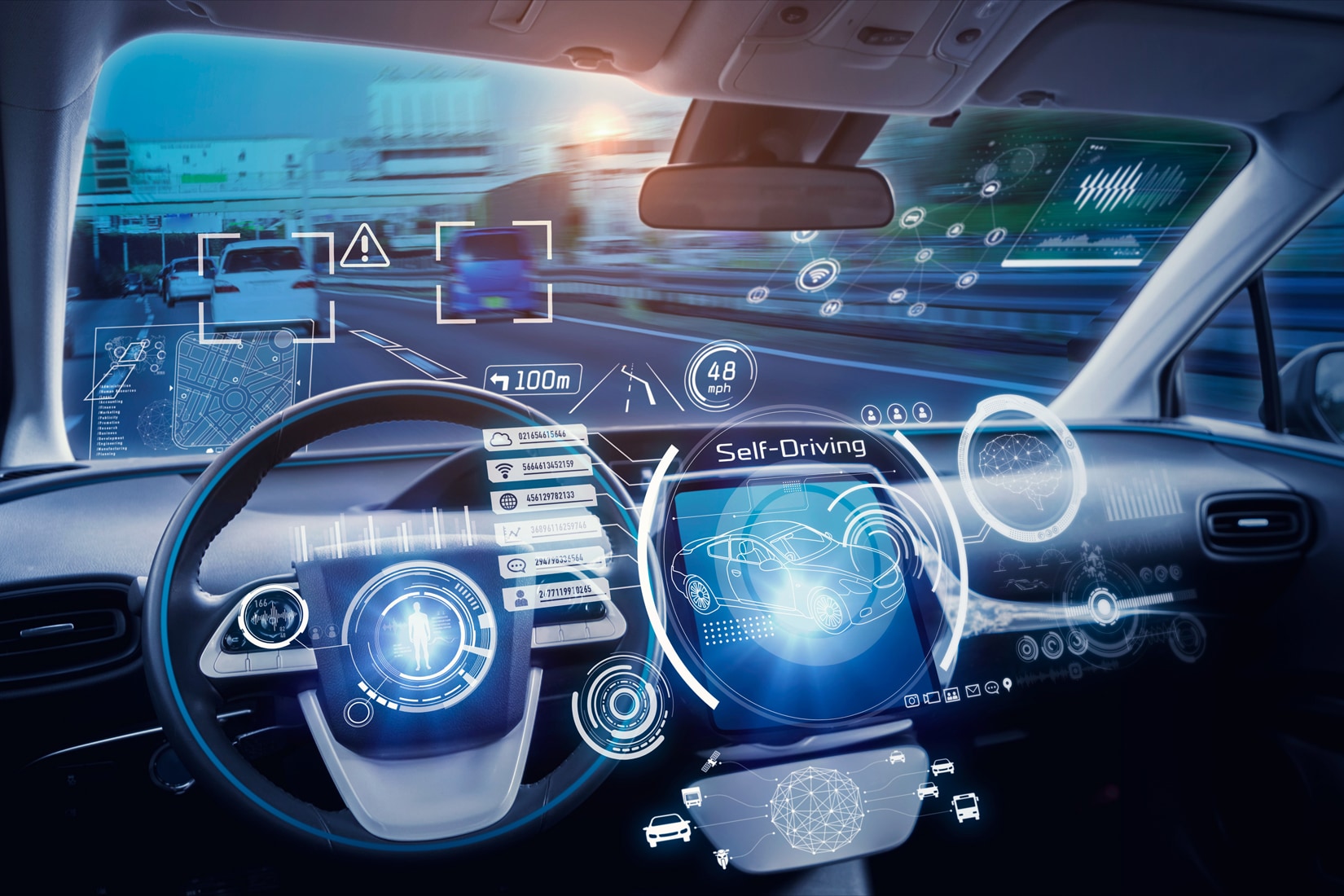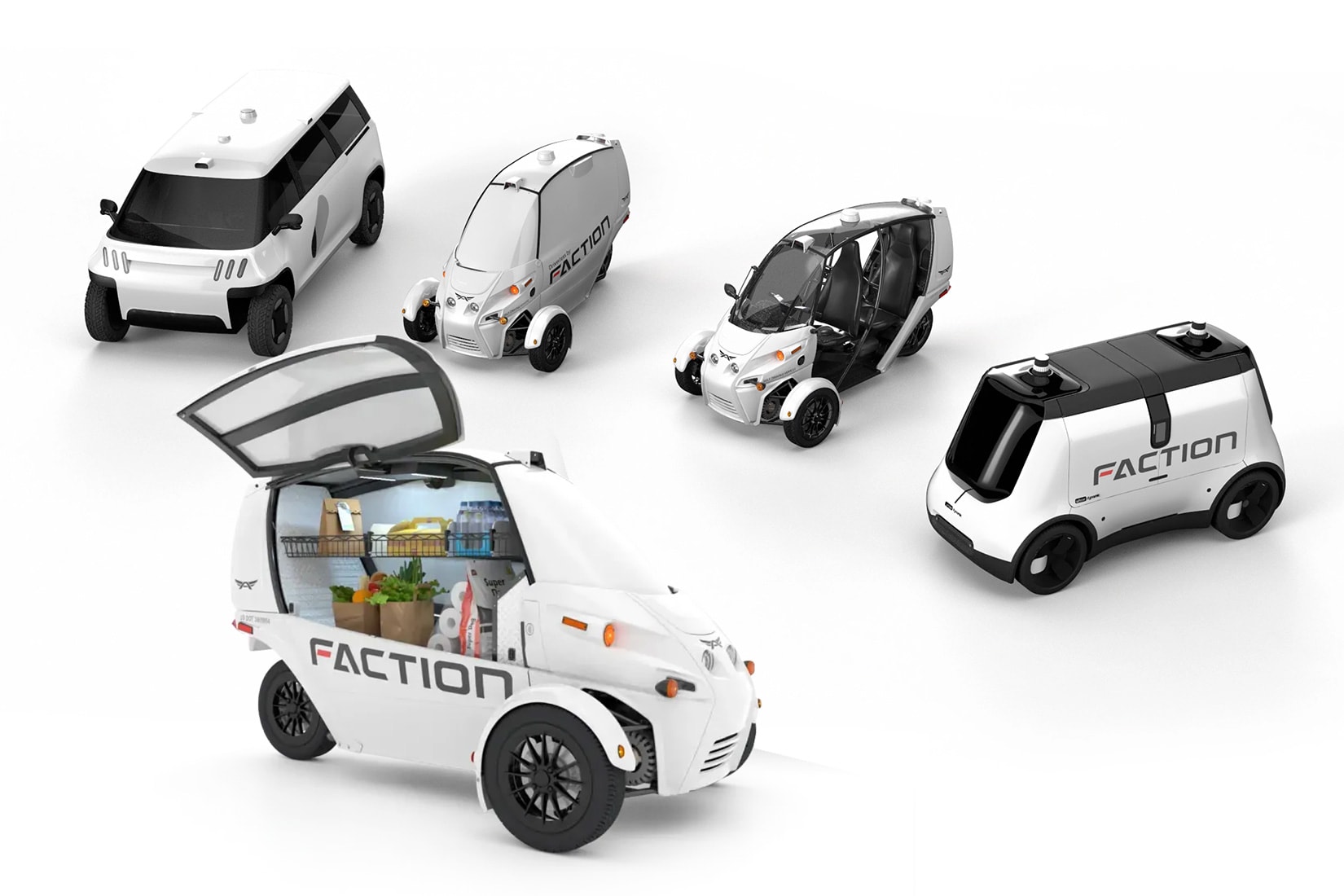

The Role of Noise Filters, Essential to the Advancement of In-Vehicle Networks
Driven by the rapid advancement of ADAS (Advanced Driver Assistance Systems) and automated driving technologies, cars are now equipped with a multitude of sensors such as cameras, radars, and LiDARs. In-vehicle networks for data communication inside the vehicle are shifting to faster, automotive Ethernet standards. As data speeds grow, so does the importance of noise suppression in these networks. Learn about noise filters optimized for the latest in-vehicle network standards.
Advancement of in-vehicle networks
Cars today are outfitted with an array of electronic devices like cameras, sensors, and radars to enable driver assistance features. In-vehicle networks carry data from these devices and tie ECUs (electronic control units) together. Because their performance directly affects vehicle safety, they are a critical part of a car’s infrastructure. In-vehicle networks are now transitioning from the hitherto common CAN-BUS (Controller Area Network Bus)*1 standard to automotive Ethernet*2, which enables much speedier communications. Automotive Ethernet not only boosts data rates but also contributes to improved real-time performance and tighter security.

▶Related Story:
The Integral Role of Power Inductors in the Electrification of Cars—Including ADAS and EVs
In-vehicle networks and the criticality of noise suppression
As data transmission in in-vehicle networks continues to move toward higher speeds and greater capacities, noise is an issue that cannot be ignored. Noise is an unwanted signal that interferes with data communication and can corrupt data, leading to false detection in sensors, transmission delays, and malfunctions in a variety of electronic devices. Especially in today’s cars that are packed with electronic devices, failures triggered by noise can significantly impact safety, making noise suppression more critical than ever.
In the context of electromagnetic waves generated by electronic devices, the ability of a device to operate without inflicting interference on surrounding devices while remaining unaffected by interference from external sources is referred to as EMC (Electromagnetic Compatibility)*3. The quintessential electronic component for implementing EMC is the noise filter. As the name implies, noise filters remove unwanted signals (noise) from the network to maintain the quality of data communication. Noise filters either absorb or block noise to ensure data communications remain accurate. They reduce transmission errors and maximize the performance of cars filled with advanced features.
Network standards such as CAN-BUS and automotive Ethernet use a method known as differential transmission, which is resistant to external noise. Common mode noise, which originates from internal circuitry, equally affects transmission in both directions. While different types of noise can infiltrate communications lines, common mode filters are designed to eliminate common mode noise efficiently, maintaining the quality of communications. Follow the links below for in-depth discussions of common mode noise.
▶Related Articles:
Intro to EMC Topics
Components—Part 5: The Common Mode Filter’s Acrobatic Ability to Separate Signals and Noise
Practical Applications—Part 2: Electrified Cars are Packed with Noise Problems
Choosing the right noise filters for automotive networks is key
Noise filters must be suited to the communication standard, frequency range, and data rate. Noise suppression for automotive Ethernet and CAN-BUS requires filters with different characteristics. Even upon deciding to use a common mode filter, the choice needs to be narrowed down to match the frequency of common mode noise to be removed. Since failures of noise filters and other electronic components can greatly affect automobile safety, service life, durability, and reliability of noise filters are major factors to be considered.
TDK’s common mode filters are acclaimed for their high performance thanks to proprietary design and wire winding technologies and enjoy a large market share among common mode filters for automotive applications. TDK has also successfully developed products compatible with the 10BASE-T1S standard, ahead of the competition. Hiroshi Suzuki of TDK Corporation’s Magnetics Business Group spoke about the strengths of TDK’s automotive common mode filters.

Head of EMC Products Business Unit
Magnetics Business Group
TDK Corporation
“The progress of automated driving capabilities and the popularization of EVs in recent years have intensified the need for noise countermeasures in cars, and EMC technology has become even more essential in vehicle design. In in-vehicle networks where our ACT series of common mode filters are used, high-speed networks like automotive Ethernet—in addition to the traditional CAN-BUS—are seeing rapid adoption to fulfill the need for high-speed, large-capacity communications. On top of providing powerful noise suppression, filters are required to exhibit well-balanced characteristics so that the signals being communicated are not adversely affected. Additionally, the electrification and multifunctionalization of vehicles have led to increased use of common mode filters in power supply lines, a trend TDK continues to meet with a broad lineup of common mode filters. The market for in-vehicle noise suppression components is expected to continue growing. TDK intends to contribute to the progress and advancement of automobiles by not only designing and developing components but by offering comprehensive EMC solutions, including evaluation services and proposals of countermeasures.”
As in-vehicle networks become faster and more sophisticated, they face the challenge of noise more than ever. Common mode filters and other noise filters help overcome this challenge and support the further evolution of in-vehicle networks. Choosing the right noise filter for an in-vehicle network environment—of which there are a variety of standards—will enable the pursuit of even greater safety and performance in automobiles. The technology behind a small noise filter can underpin the automotive industry’s growth in big ways.
TDK’s Common Mode Filters for Automotive Applications

For more information on TDK’s automotive common mode filters and other noise filter products, please visit the Product Center.
Watch a promotional video of common mode filters for automotive applications featured in this article.
Terminology
- CAN-BUS: Acronym for Controller Area Network Bus, the most widely-adopted serial communication protocol for in-vehicle networks.
- Ethernet: The most common wired networking standard for personal computers and electronic devices. It is also growing in popularity as a standard for in-vehicle networks.
- EMC: Abbreviation for Electromagnetic Compatibility, which describes an electronic device’s performance with regard to noise. It is divided into EMI (Electromagnetic Interference), which refers to the emission of noise from a device, and EMS (Electromagnetic Susceptibility), which describes how a device is affected by external noise.














